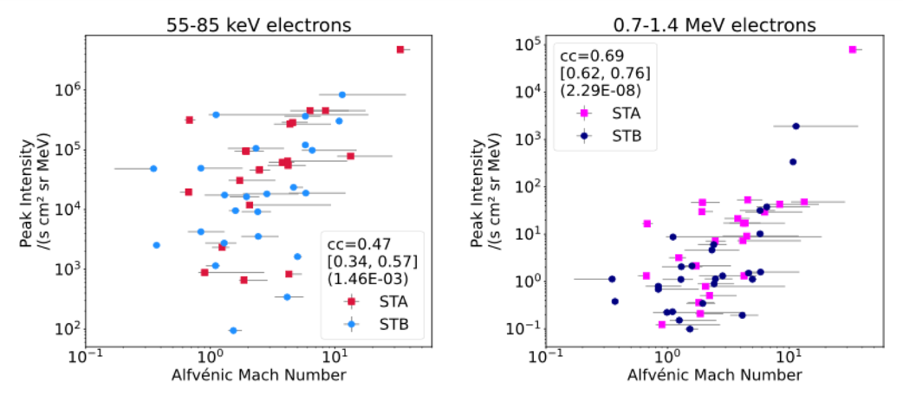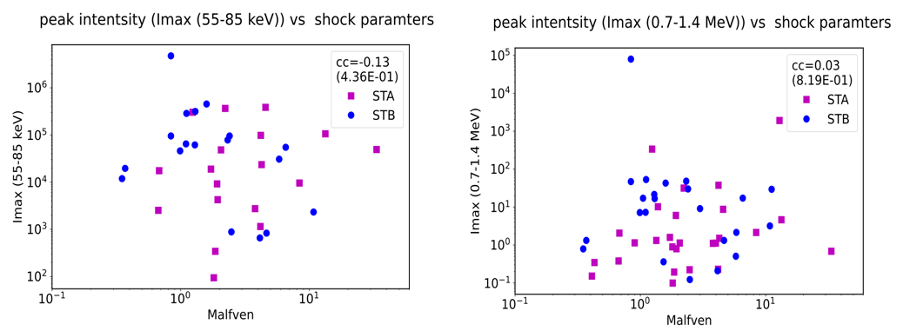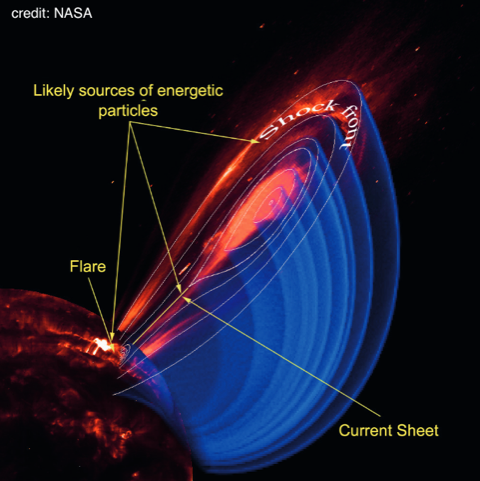Large and fast Coronal Mass Ejections (CMEs) can drive shock fronts that are known to be efficient accelerators of protons even up to distances of the Earth. However, the role of shocks in accelerating solar energetic electrons is still not understood and highly debated. This topic is one of SERPENTINE’s specific science questions and to tackle it we analyzed in-situ measurements of solar energetic electrons observed by the STEREO spacecraft for 33 events that were accompanied by large and fast CMEs. The shocks driven by these CMEs were previously analyzed by Kouloumvakos et al. (2019), who provided 3D shock characteristics along the whole shock front allowing us to compare the in-situ measurements with the shock regions that were magnetically connected to the spacecraft. Kouloumvakos et al (2019) found already striking correlations between peak intensities of deka MeV protons, especially with the shock’s Alfvénic Mach number, which measures how fast the shock is with respect to small-amplitude waves in the ambient medium. The higher its Mach number, the more efficient the shock should, theoretically, be in accelerating particles.
Our analysis reveals that the peak intensities of high energy electrons at ~1MeV correlate similarly well with the shock parameters as the protons. However, for ~100 keV electrons, the correlation is significantly weaker (see Fig. 1). This suggests that the high-energy electrons are accelerated mainly by the shock, while the low energy electrons are likely produced by a mixture of flare and shock-related acceleration processes.

Doing the swap test
We tested our results by swapping the values of STEREO A and B: When peak intensities at STEREO A are related with the Alfvénic Mach numbers at the magnetic footpoint of STEREO B and vice versa, the correlations vanish (see Fig. 2). This strongly supports the causal relationship of the accelerated electrons with the shock and shows that the location on the shock front, to which the spacecraft is connected, matters!

References:
Dresing, N., Kouloumvakos, A., Vainio, R., & Rouillard, A., ApJL, 925, doi:10.3847/2041-8213/ac4ca7
Kouloumvakos, A., Rouillard, A. P., Wu, Y., et al. 2019, ApJ, 876, 80, doi:10.3847/1538-4357/ab15d7

